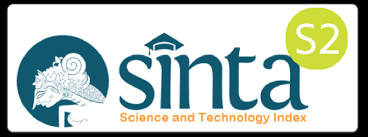Exploring the Introduction of Computational Thinking in STEM Education in Australian Schools
Abstract
Keywords
Full Text:
PDFReferences
Aho, A. V. (2012). Computation and computational thinking. The Computer Journal, 55(7), 832-835.
Australian National Curriculum 1 (2017) http://educationstandards.nsw.edu.au/wps/portal/nesa/k-10/learning-areas/technologies/coding-across-the-curriculum
Barr, V., & Stephenson, C. (2011). Bringing computational thinking to K-12: What is involved and what is the role of the computer science education community? ACM Inroads, 2(1), 48–54.
Bowen, G. A. (2009). Document analysis as a qualitative research method. Qualitative Research Journal, 9(2), 27-40.
Caspersen, M. E., & Nowack, P. (2013, January). Computational thinking and practice: A generic approach to computing in Danish high schools. In Proceedings of the Fifteenth Australasian Computing Education Conference-Volume 136 (pp. 137-143). Australian Computer Society,
García-Peñalvo, F. J., Reimann, D., Tuul, M., Rees, A., & Jormanainen, I. (2016). An overview of the most relevant literature on coding and computational thinking with emphasis on the relevant issues for teachers. Belgium: TACCLE3 Consortium. doi:10.5281/zenodo.165123.
Grover, S., & Pea, R. (2013). Computational thinking in K–12: A review of the state of the field. Educational Researcher, 42(1), 38-43.
Jona, K., Wilensky, U., Trouille, L., Horn, M. S., Orton, K., Weintrop, D., & Beheshti, E. (2014). Embedding computational thinking in science, technology, engineering, and math (CT-STEM). Proceedings in Future directions in computer science education summit meeting, Orlando, FL.
Hu, C. (2011, June). Computational thinking: what it might mean and what we might do about it. In Proceedings of the 16th Annual Joint Conference on Innovation and Technology in Computer Science Education (pp. 223-227). ACM.
Labuschagne, A. (2003). Qualitative research: Airy fairy or fundamental? The Qualitative Report, 8(1), Article 7. Retrieved 17 April 2019, from https://nsuworks.nova.edu/tqr/vol8/iss1/7/
Lu, J. J., & Fletcher, G. H. (2009). Thinking about computational thinking. In ACM SIGCSE Bulletin, 41(1), 26.
Lye, S. Y., & Koh, J. H. L. (2014). Review on teaching and learning of computational thinking through programming: What is next for K-12? Computers in Human Behavior, 41, 51-61.
Piccinini, G., & Scarantino, A. (2010). Computation vs. information processing: why their difference matters to cognitive science. Studies in History and Philosophy of Science, 41(3), 237-246. 0-264.
New South Wales Education Standards Authority [NESA] (2017). Digital Technologies and ICT Resources Retrieved from: http://educationstandards.nsw.edu.au/wps/portal/nesa/k-10/learning-areas/technologies/coding-across-the-curriculum
Seoane-Pardo, A. M. (2016, November). Computational thinking beyond STEM: an introduction to moral machines and programming decision making in ethics classroom. In Proceedings of the Fourth International Conference on Technological Ecosystems for Enhancing Multiculturality (pp. 37-44). ACM.
Setle, A., Franke, B., Hansen, R., Spaltro, F., Jurisson, C., Rennert-May, C., & Wildeman, B. (2012, July). Infusing computational thinking into the middle-and high-school curriculum. In Proceedings of the 17th ACM annual conference on Innovation and technology in computer science education (pp. 22-27). ACM.
Swaid, S. I. (2015). Bringing computational thinking to STEM education. Procedia Manufacturing, 3, 3657-3662.
Voogt, J., Fisser, P., Good, J., Mishra, P., & Yadav, A. (2015). Computational thinking in compulsory education: Towards an agenda for research and practice. Education and Information Technologies, 20(4), 715-728.
Wing, J. M. (2006). Computational thinking. Communications of the ACM, 49(3), 33-35.
Wing, J. M. (2008). Computational thinking and thinking about computing. In Philosophical Transactions of the Royal Society of London A: mathematical, physical and engineering sciences, 366(1881), 3717-3725.Roussev, B. (2003b). Teaching introduction to programming as part of the IS component of the business curriculum.
DOI: https://doi.org/10.46517/seamej.v9i1.70
Refbacks
- There are currently no refbacks.
Indexed by:
Southeast Asian Mathematics Education Journal
SEAMEO Regional Centre for QITEP in Mathematics
Jl. Kaliurang Km 6, Sambisari, Condongcatur, Depok, Sleman
Yogyakarta, Indonesia
Telp. +62 274 889955
Email: seamej@qitepinmath.org
p-ISSN: 2089-4716 | e-ISSN: 2721-8546
Southeast Asian Mathematics Education Journal is licensed under a Creative Commons Attribution 4.0 International License
View My Stats
Supported by:



